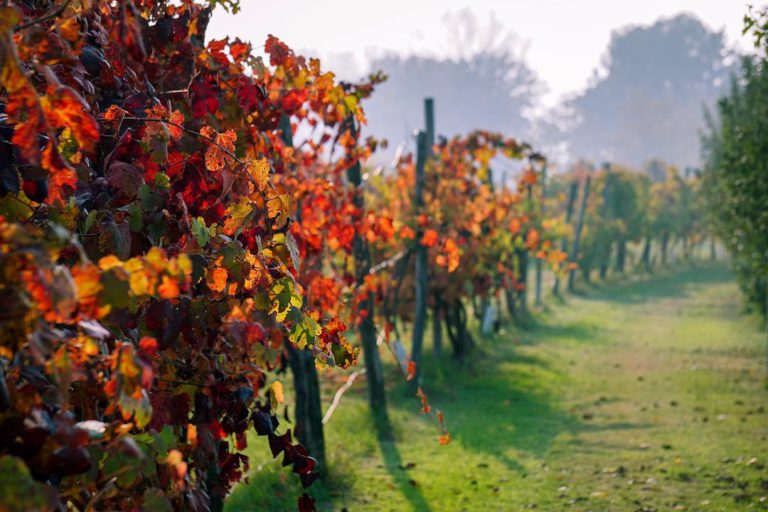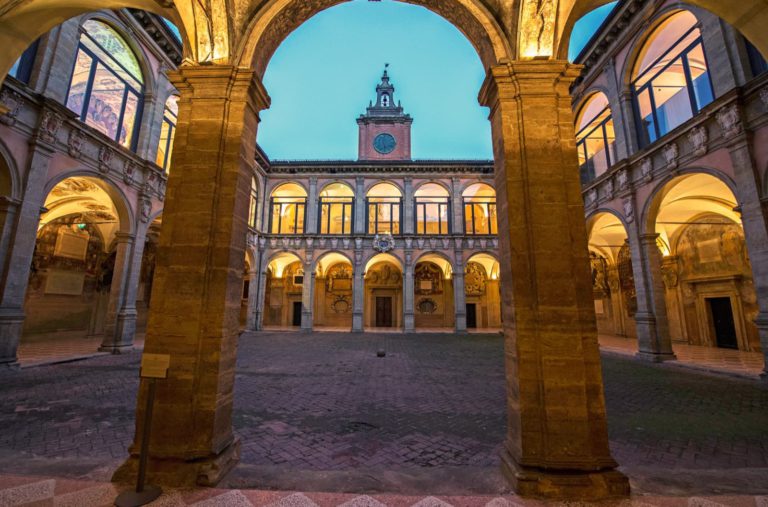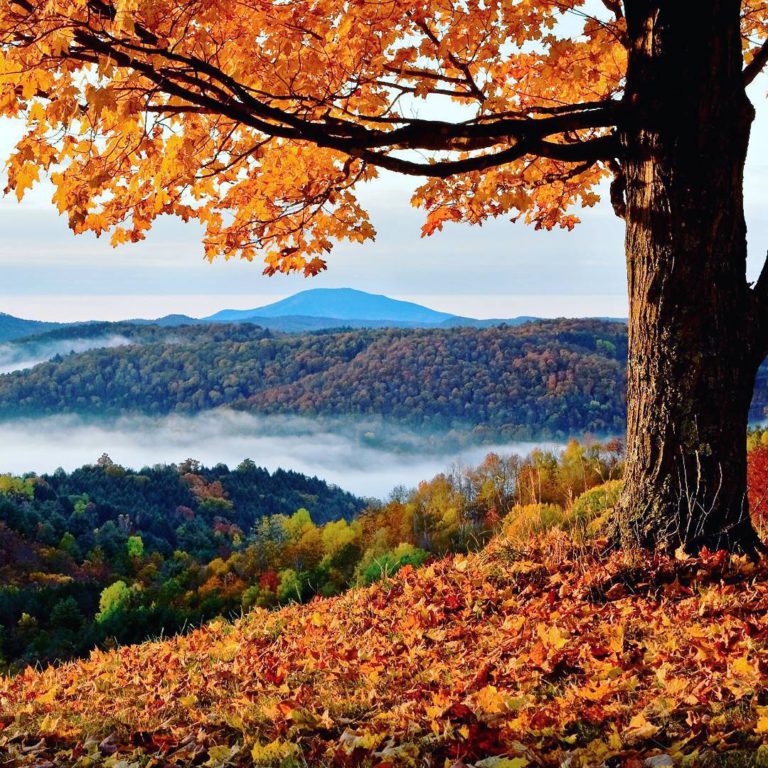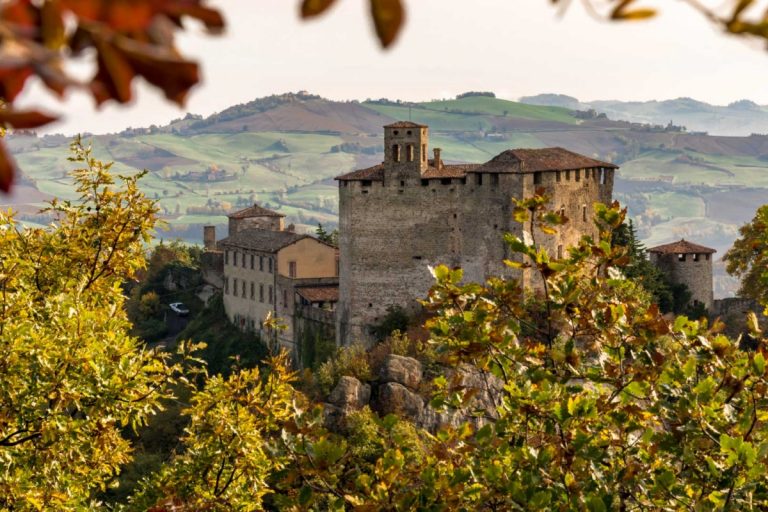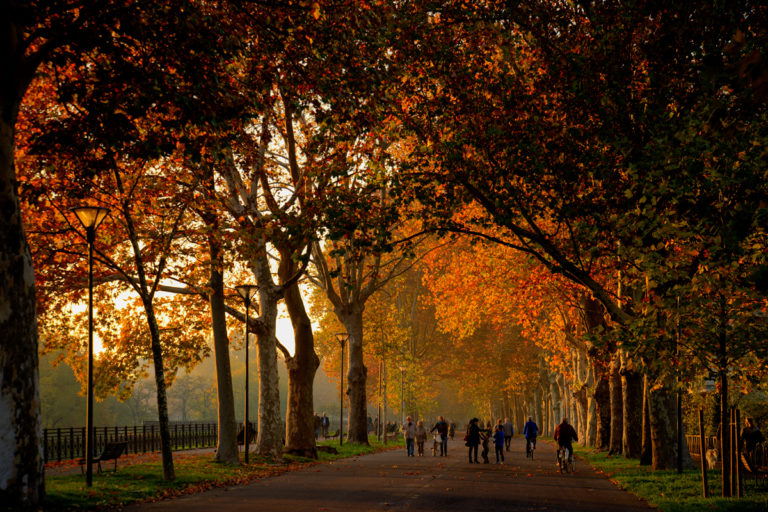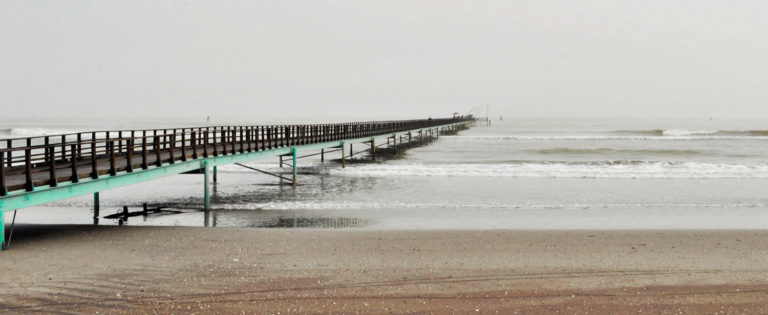Traveler
Friends/Solo traveler
Mens sana in corpore sano (or A healthy mind in a healthy body): this is the theme of this series of suggestions for an autumn weekend in Emilia-Romagna, where the pleasure of art is combined with physical pleasure, thanks to a subsequent stop at a spa.
It begins with the pleasure of culture. The artistic sites of Emilia-Romagna have that special something: they know how to delight. A Unesco site, a Renaissance square, a sixteenth-century courtyard, a castle perched on a cliff, an ancient theatre full of wonders: the cities and towns of Emilia-Romagna are always full of poetry.
Afterwards, you can complete your artistic journey with a regenerating break at a spa. There are 23 spas along the Via Emilia, from the hills of Parma to the sea.
Here are some ideas for a weekend to try all year round, but especially in Autumn.
Klimt in Piacenza and the Spas of Salsomaggiore and Tabiano

?️ In Piacenza the spy story of Klimt’s painting at the Ricci Oddi Gallery
Magnetic gaze, languid posture, thick hair: this is Gustav Klimt’s famous Portrait of a Lady, the most famous and admired painting in the Ricci Oddi Gallery of Modern Art in Piacenza.
Painted around 1917, this work is also fascinating because of the spy-story surrounding it.
The Portrait of a Lady was mysteriously stolen in 1997 and, incredibly, was found after so many years, at Christmas 2019, in a hidden compartment in the outer wall of the museum.
Klimt’s masterpiece and the rich collection of contemporary art on display at Ricci Oddi are not the only reasons for a weekend in Piacenza: the city is secluded and discreet, full of beauty.
⛲ Relaxation at the spas of Salsomaggiore and Tabiano
About fifty minutes from Piacenza are the two spa towns of Salsomaggiore and Tabiano. At the latter, you can relax in the T-Spatium Thermal Wellness Centre with a 32°-35° thermal pool, spa, sauna, Turkish bath, Kneipp path, hydromassage and aromatherapy showers, mud baths and thermal treatments; various day spa formulas are available.
The Farnese Theatre in Parma and the Spas of Monticelli and Sant'Andrea

? In Parma, marvel at the Farnese Theatre
The Teatro Farnese in Parma, the ducal theatre built in 1618 in the Palazzo della Pilotta, is well worth a visit in autumn. Made entirely of wood, it is one of the largest baroque theatres in Europe, very tall and full of secret theatrical devices, innovative for the time. To visit it is to be overwhelmed by its majesty: the stage is 40 metres long, with an opening of 12 metres.
The Teatro Farnese is part of the Palazzo della Pilotta tour, which also includes the Galleria Nazionale, a museum with one of the richest art collections in Italy.
Lovers of art and beauty can spend hours here.
⛲ Relaxation at the spas of Monticelli and Sant’Andrea
If you fancy a dip in a pool of soothing waters after a day of art, the Terme di Monticelli, just a few minutes from Parma, offer a 4,000 square metre spa area with swimming pools, jacuzzis and wellness trails.
Massages and spa treatments are available.
Further out of the city are the Terme di Sant’Andrea, set in the woods of a narrow valley where pure, crystal-clear waters flow.
The Baroque of Reggio Emilia and the Cervarezza Spa
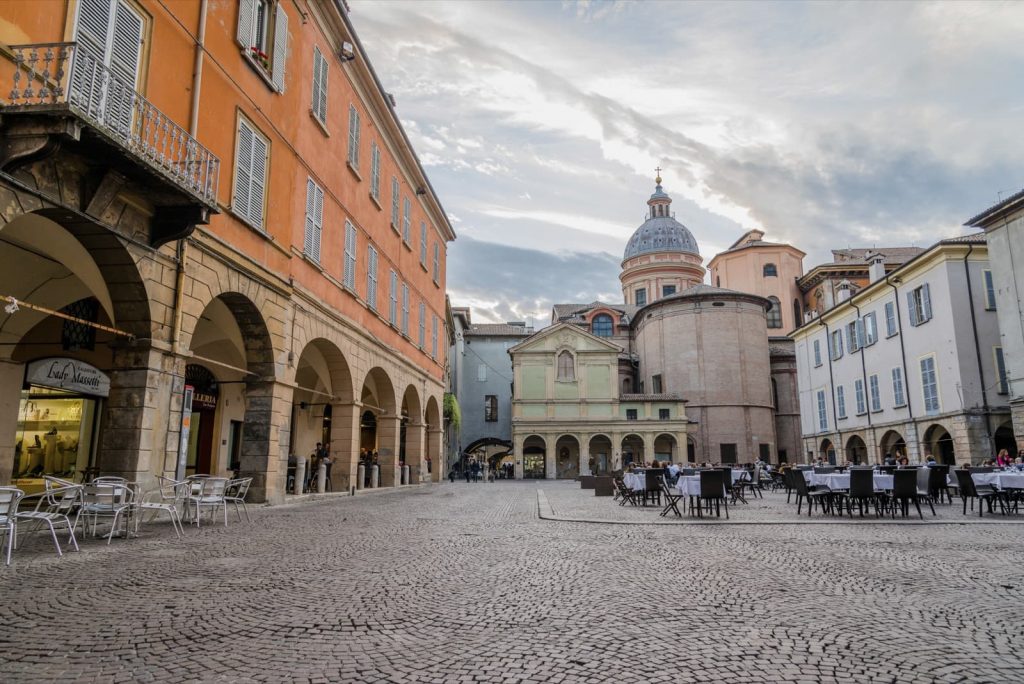
⛪ Reggio Emilia, a slow journey through Italian Baroque
Baroque is the theme of a weekend in Reggio Emilia.
The tour begins in the magnificent Basilica della Beata Vergine della Ghiara, filled with frescoes and altarpieces by artists from Carracci to Guercino. Today it is illuminated by technology that allows us to see every golden glow and brushstroke on the domes and ceilings.
Let us continue to the picturesque Piazza San Prospero, in front of the Basilica of the same name, ‘protected’ on the parvis by six red marble lions and characterised by a hexagonal bell tower.
Then we come to the Church of San Girolamo e Vitale, the most unique Baroque experience in the city: behind the Baroque façade there are three other churches with labyrinths, symbols and a sacred staircase with 28 steps, a perfect number. It was designed by the most ingenious and cerebral of Baroque stage designers, Reggio Gaspare Vigarani (1588-1663), architect at the court of Louis XIV, the Sun King.
Guided tours one Saturday a month.
⛲ Relaxation at the Cervarezza Spa
Less than an hour from Reggio Emilia, you reach the Apennines and the ancient territories of Matilde di Canossa, the most famous female figure of the European Middle Ages. The landscape changes completely and you are immersed in beech and pine woods. Here you will find the Terme di Cervarezza.
The sulphurous waters are used for mud therapies, relaxing baths and remise en forme.
Open from April to November.
The Unesco of Modena and the Salvarola Spa
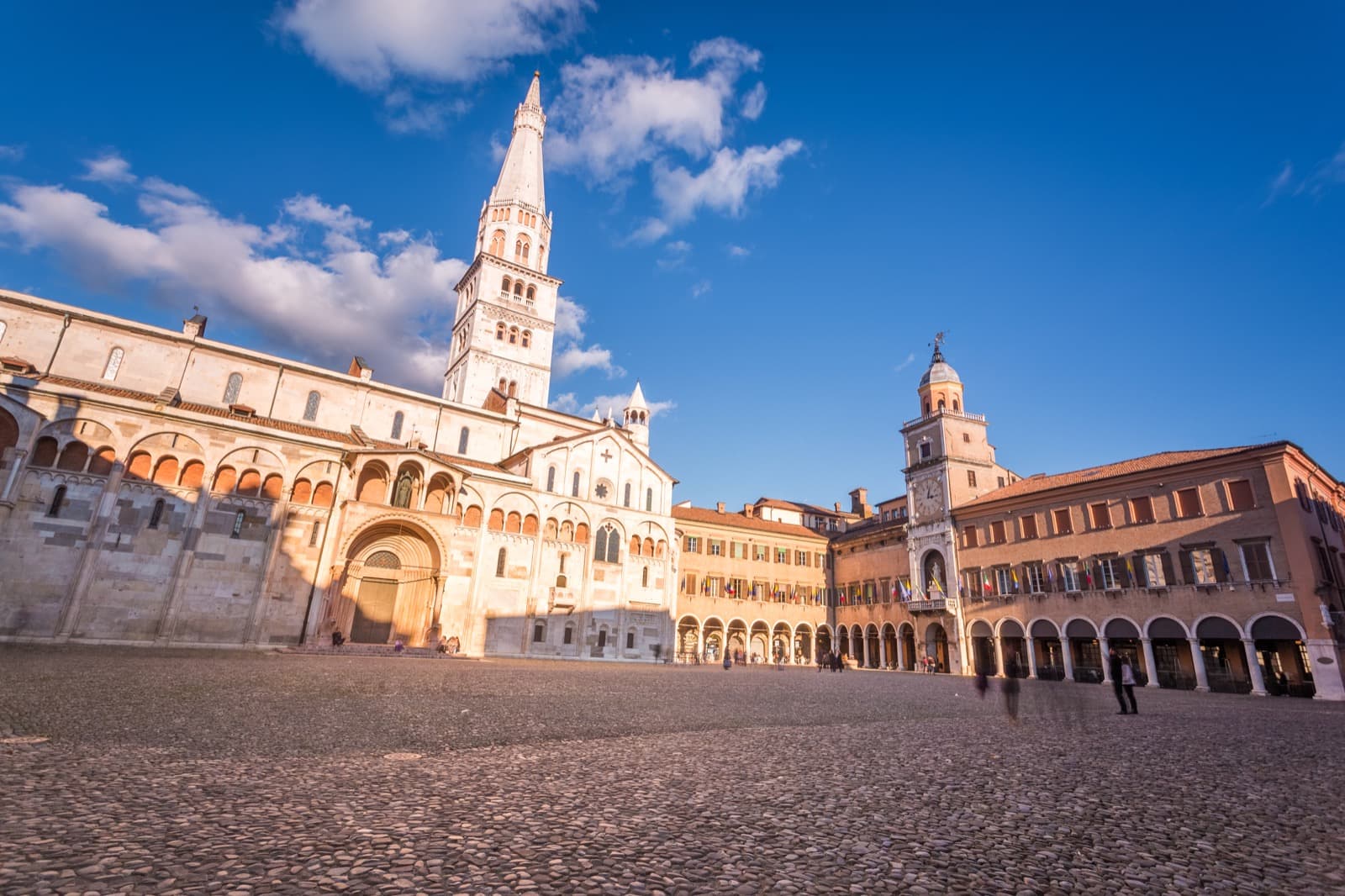
?️ Modena: art, good food and the world’s most desirable cars, all in one city
With its Unesco sites (the white Romanesque Duomo, the Piazza and the 89-metre-high Ghirlandina Tower), Modena is perfect for a weekend of art.
Also in the city is the Enzo Ferrari Museum, built on the core of the house where Enzo Ferrari was born. It has a yellow aluminium bonnet as roof, large windows as walls and houses cars that have become legends.
A corner of past times is the tree-lined Piazzetta della Pomposa, with pastel-coloured arcaded houses, iron lamp-posts, a small church and a small fountain.
Salumi, cheeses, Traditional Balsamic Vinegar, Lambrusco, Parmigiano and all the best of Modena cuisine can be found at the Liberty-style Albinelli Market (1931).
⛲ Relaxation at the Salvarola Spa
A stone’s throw from Maranello (where the other Ferrari museum can be found), the Terme della Salvarola are located in the Sassuolo area. You can relax in the Balnea Wellness Centre with its five sulphur-magnesium pools, jacuzzis and hydro-paths. The Terme della Salvarola were the first in Italy to offer vinotherapy rituals, such as a bath for two in a barrel of must and thermal water, and treatments based on Vignola cherries.
The Porticoes of Bologna and the Spas in the hills or in the city
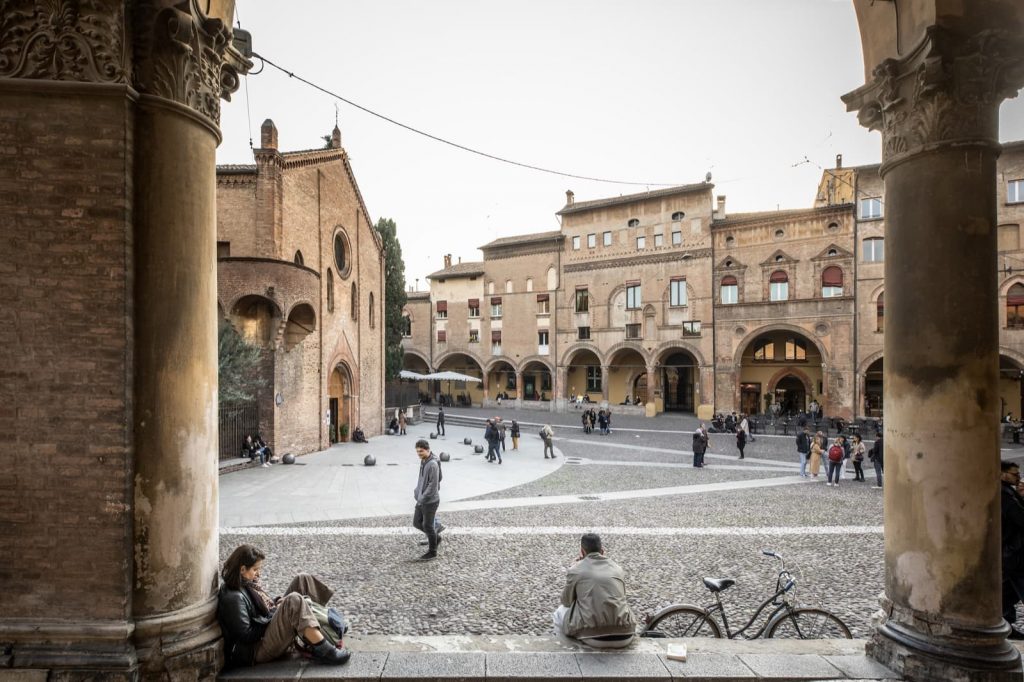
?️ Bologna, walking under the longest porticoes in the world, a Unesco Heritage Site
A poetic weekend dedicated to Bologna‘s porticoes, the longest in the world (62 km), the 12 most precious sections of which are a Unesco World Heritage Site.
Kilometres of covered walkways – Medieval, Renaissance, Baroque and contemporary – connecting streets, towers and palaces. Not to be missed are the covered arches of Via Santa Caterina, with its houses painted in bright colours. From Piazza Maggiore, walk under the elegant Portico del Pavaglione to Piazza Cavour and Via Farini, with its richly decorated ceilings. Continue to Piazza Santo Stefano and the monumental Baraccano complex. A few hours should be spent visiting the famous Portico di San Luca, which climbs to the top of the hill where the Sanctuary stands, offering a splendid view of the city.
⛲ Relaxation at the Spas of Castel San Pietro, Porretta, Monterenzio, San Luca, Felsinee
After so much beauty and culture, you cannot leave Bologna without trying one of its many spas, where you can relax in a thermal pool, with a soothing mud bath and a therapeutic massage.
A few minutes’ drive along the ancient Via Emilia will take you to the Terme di Castel San Pietro, a Renaissance spa.
Just outside Bologna are the Terme di Porretta, in the woods and mountains of the Bolognese Apennines.
In less than an hour’s drive you can reach the Terme dell’Agriturismo in Monterenzio, with its albergo diffuso.
If you prefer to stay in the city, there are Terme San Luca and Terme Felsinee.
The Antonioni Space in Ferrara and the Spa in the Po Delta
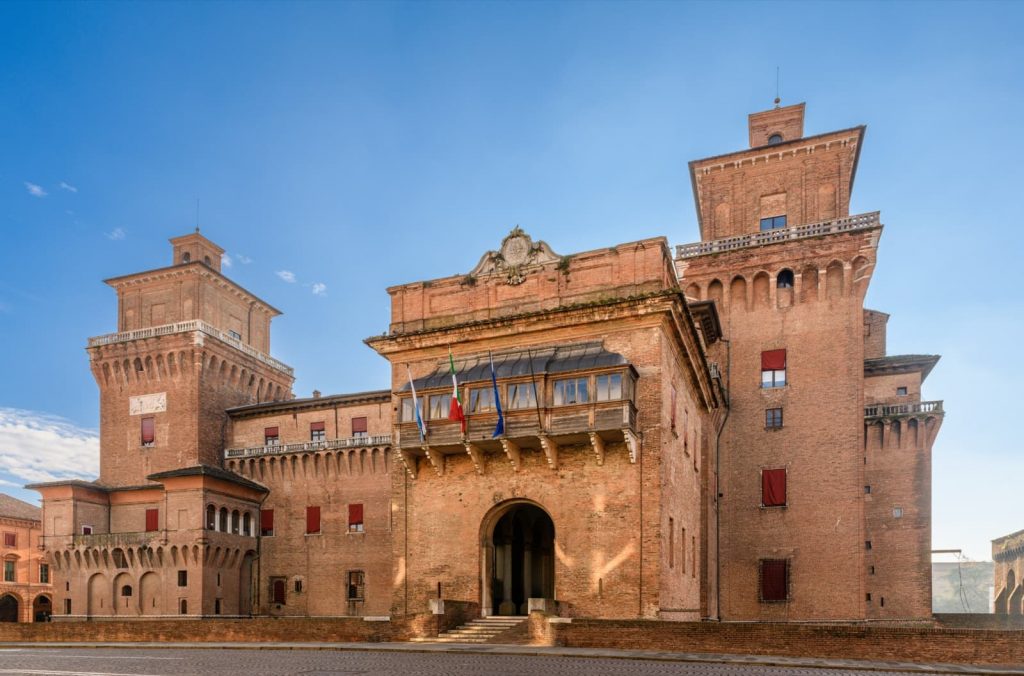
?️ In Ferrara, a cinema tour in the museum and places of Michelangelo Antonioni
In Ferrara there is the Spazio Antonioni, dedicated to the director from Ferrara (1912-2007), considered one of the greatest filmmakers in the history of world cinema. The museum is a must for cinema lovers. It occupies two floors of the former Contemporary Art Pavilion of Palazzo Massari and contains over 47,000 items, including films, set photographs, original scripts, the library, awards (such as the Palme d’Or at the 1967 Cannes Film Festival) and the director’s personal belongings.
It is an opportunity to enjoy Ferrara, a Unesco World Heritage Site, and to visit the places where Antonioni lived: from the family homes, to the city as seen through the director’s camera, with the views used for some of the film sets, to his tomb in the Renaissance complex of the Certosa, a former convent founded in 1452 at the behest of Borso d’Este.
⛲ Relaxation at the Spa in the heart of the Po Delta Park
The thermal spa centre in the Ferrara area is Thermae Oasis, located in the Po Delta Park, one hour from the city, at Camping Village Tahiti in Lido delle Nazioni, just a few steps from the sea. It is open seasonally (from April to October). With thermal pools, a vascular trail, waterfalls, jacuzzis and a steam cave, there is everything to relax.
The Mosaics of Ravenna and the Spas in the hills or by the sea
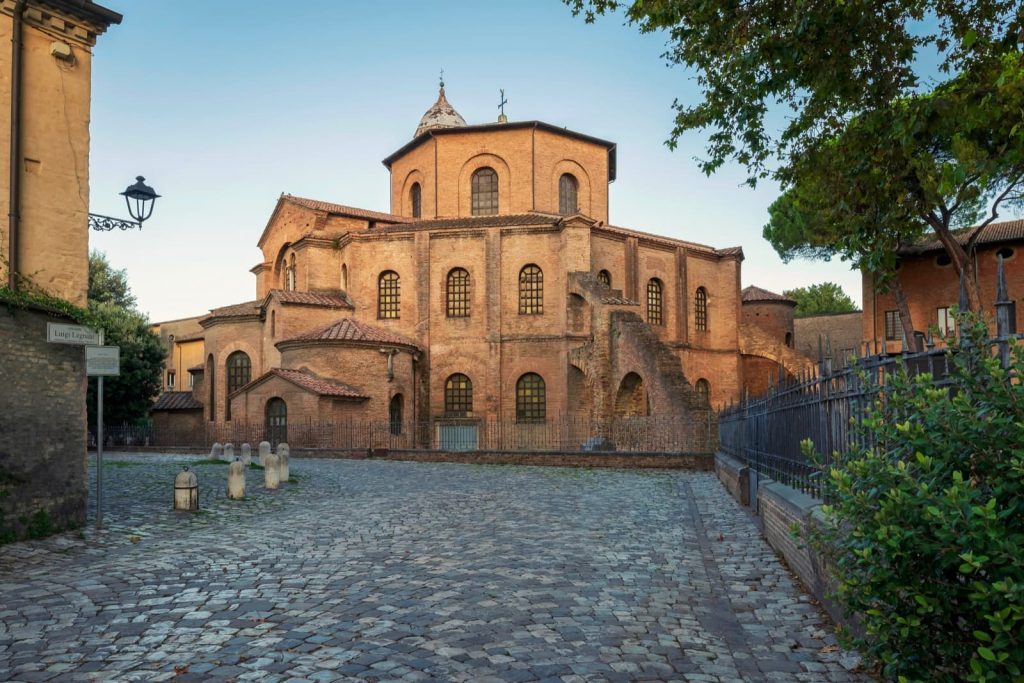
? Ravenna, discover the Unesco city that has been the capital of three empires
Ravenna is a splendid and certainly unique destination because it symbolises the fusion of East and West. It was the capital of two empires: the Western Roman Empire and the Byzantine Empire. Later it also became the capital of the Ostrogothic kingdom.
There are no less than eight Unesco sites: the Basilica of San Vitale, the Mausoleum of Galla Placidia and that of Theodoric, the Basilica of Sant’Apollinare Nuovo and Sant’Apollinare in Classe, the Baptistery of the Arians and the Neonian Baptistery, the Chapel of Saint Andrew. They can be visited with a single ticket.
Not to be missed is the tomb of Dante Alighieri (1265-1321), who spent the last years of his life in Ravenna.
⛲ Relaxation at the Spas of Riolo, Punta Marina, Terme di Cervia, Terme del Mare
You could say that in Ravenna you are spoilt for choice when it comes to choosing a place to relax and regenerate after so many explorations dedicated to art. There are no less than four excellent spas, starting with the historic Terme di Riolo, in the hills inland, with its large thermal pool with wide windows overlooking a centuries-old tree-lined park.
Back on the coast, there are three other spas: Terme di Punta Marina, a complex that rises between the sea and the pine forest, beloved by the English poet Byron; Terme di Cervia, where, thanks to the millenary salt mine (which produces the famous Dolce di Cervia salt), a mother water is used for extraordinary mud baths. Finally, also in Cervia, the Terme del Mare, overlooking the sea, inside the Hotel Dante.
The Abbey of Forlì and the Spas of Bagno di Romagna and Castrocaro
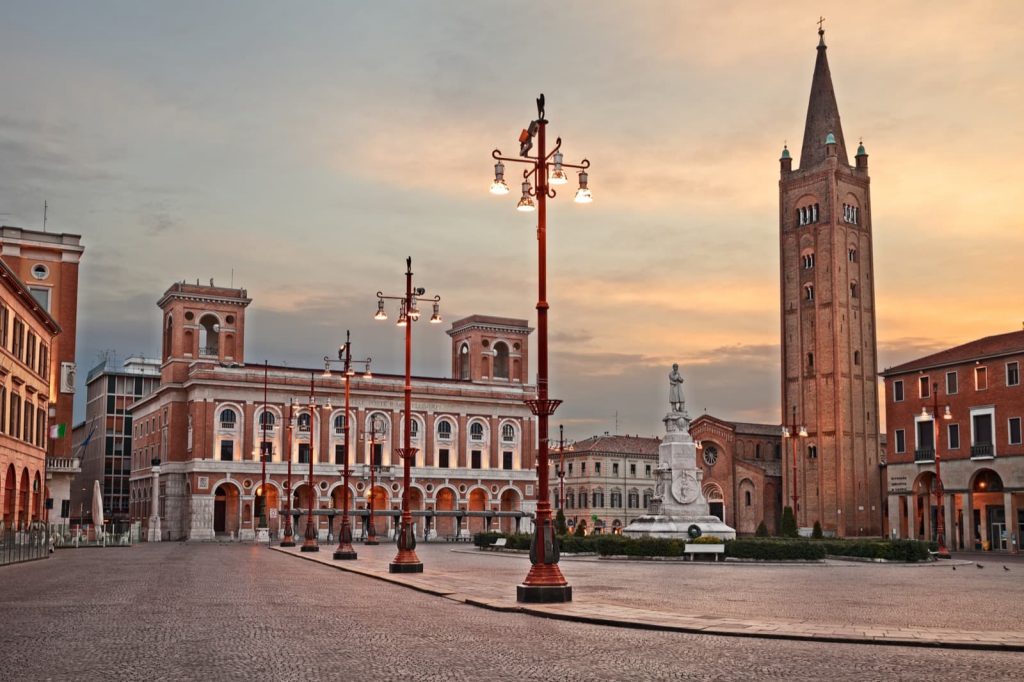
? In Forlì, climb the bell tower of the Abbey of San Mercuriale
The Romanesque-Lombard Abbey of San Mercuriale in Forlì (dedicated to the first bishop of the city) was built between 1178 and 1181 on the remains of the 6th century parish church of Santo Stefano.
The abbey is still dominated by the imposing Lombard bell tower, over 70 metres high, which is open to the public on feast days such as Christmas, Easter, the feast of San Mercuriale (26 October) and Our Lady of the Fire (4 February). You can climb the 274 steps to the top of the bell tower and enjoy a panoramic view of the city.
At the end of Corso Diaz stands the Ravaldino Fortress, property of Caterina Sforza (1463-1509), an indomitable and combative figure, the female symbol of Forlì. Her fierce enemy was the ruthless Cesare Borgia. It is said that Caterina’s spirit still hovers among the paths and walls of the castle, which is characterised by the four circular towers.
⛲ Relaxation at Ròseo Euroterme Wellness Resort, Terme Sant’Agnese and Terme di Castrocaro
One hour from Forlì, you enter the majestic National Park of the Casentino Forests and Mount Falterona. Among the woods, peaks and streams there is a small jewel, the village of Bagno Romagna. Here you will find all the ingredients to relax in the pure air and in the pools filled with precious waters of the two spas: the Ròseo Euroterme Wellness Resort and the Hotel delle Terme Sant’Agnese.
Nature is also the great protagonist of the landscape surrounding the Terme di Castrocaro, half an hour from Forlì, a destination for wellness and health since 1838. Impeccable service at the Grand Hotel Terme & Spa, in pure Art Deco and Liberty style, where longevity protocols are carried out.
Roman Rimini and the Spas by the Sea
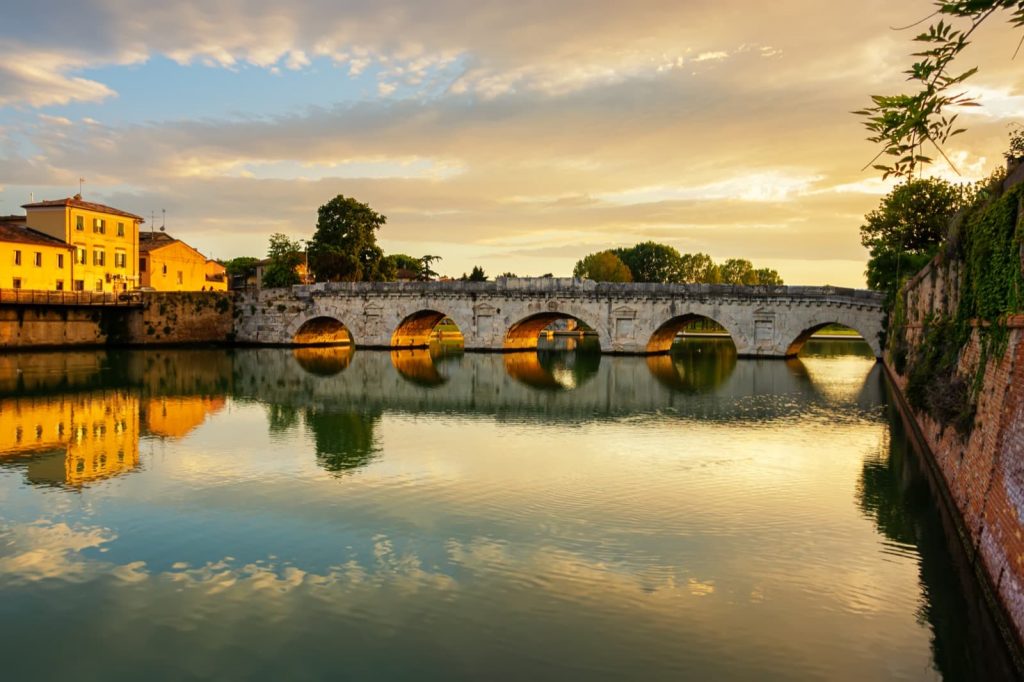
?️ In Rimini, besides the winter sea, you can discover a city of art rich in treasures
When the summer fades and the beach umbrellas close, Rimini can reveal its true soul as a city of precious art. One idea for a weekend is the Imperial Era tour. Ancient Ariminum, founded by the Romans, is a city with over 22 centuries of history.
One of its masterpieces is the Arch of Augustus, the oldest surviving Roman arch in the world. It is made of Istrian stone and is over 10 metres high.
The other symbol of Rimini is the snow-white Tiberius Bridge, built on the original course of the Marecchia river, just outside the ancient Roman centre. After 2000 years, it is still perfectly usable.
The third stop is the Surgeon’s Domus, a Roman house from the second half of the 2nd century, discovered by chance in 1989. It was the home of a doctor, and here, among the porticoes and balustrades, you can see his rich residence and his surgery with all its instruments.
⛲ Relaxation in Riminiterme and Riccione Terme
If you’re enjoying a few days in Rimini, you don’t have to travel far to give yourself time to take care of your body. Riminiterme is located on the large beach between Rimini and Riccione and exploits the properties of thalassotherapy and bromine and iodine thermal waters. You can choose a day spa formula, for a day or just a few hours.
A few kilometres along the coast is Riccione Terme. This seaside resort also offers many thermal wellness treatments based on the use of precious sulphurous waters.
Author
You may also like

Interested in our newsletter?
Every first of the month, an email (in Italian) with selected contents and upcoming events.
Autumn in Emilia-Romagna: 5 fall travel ideas
by Davide Marino /// October 14, 2024
Autumn Break in Italy: the art cities of Emilia-Romagna
by Davide Marino /// October 18, 2019
